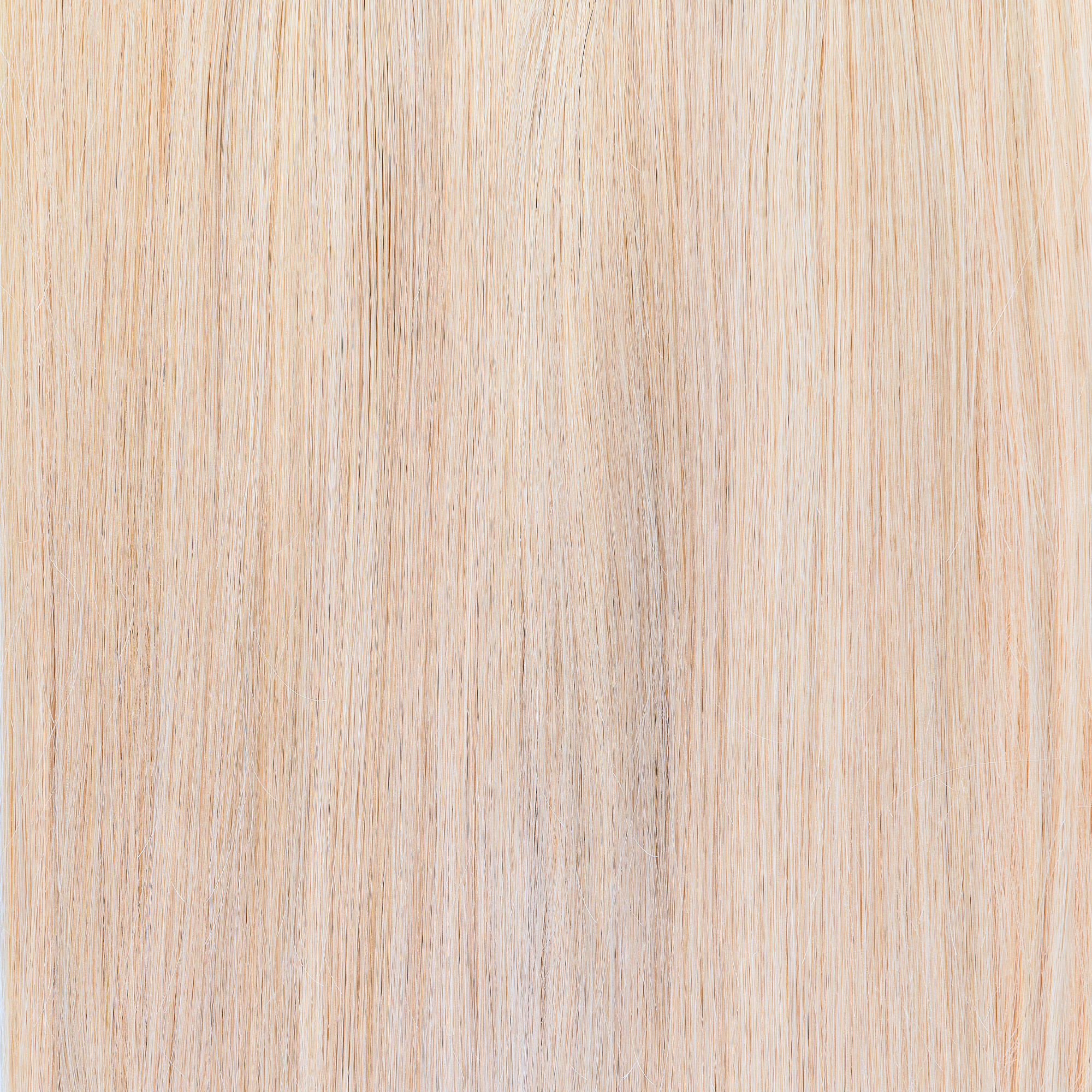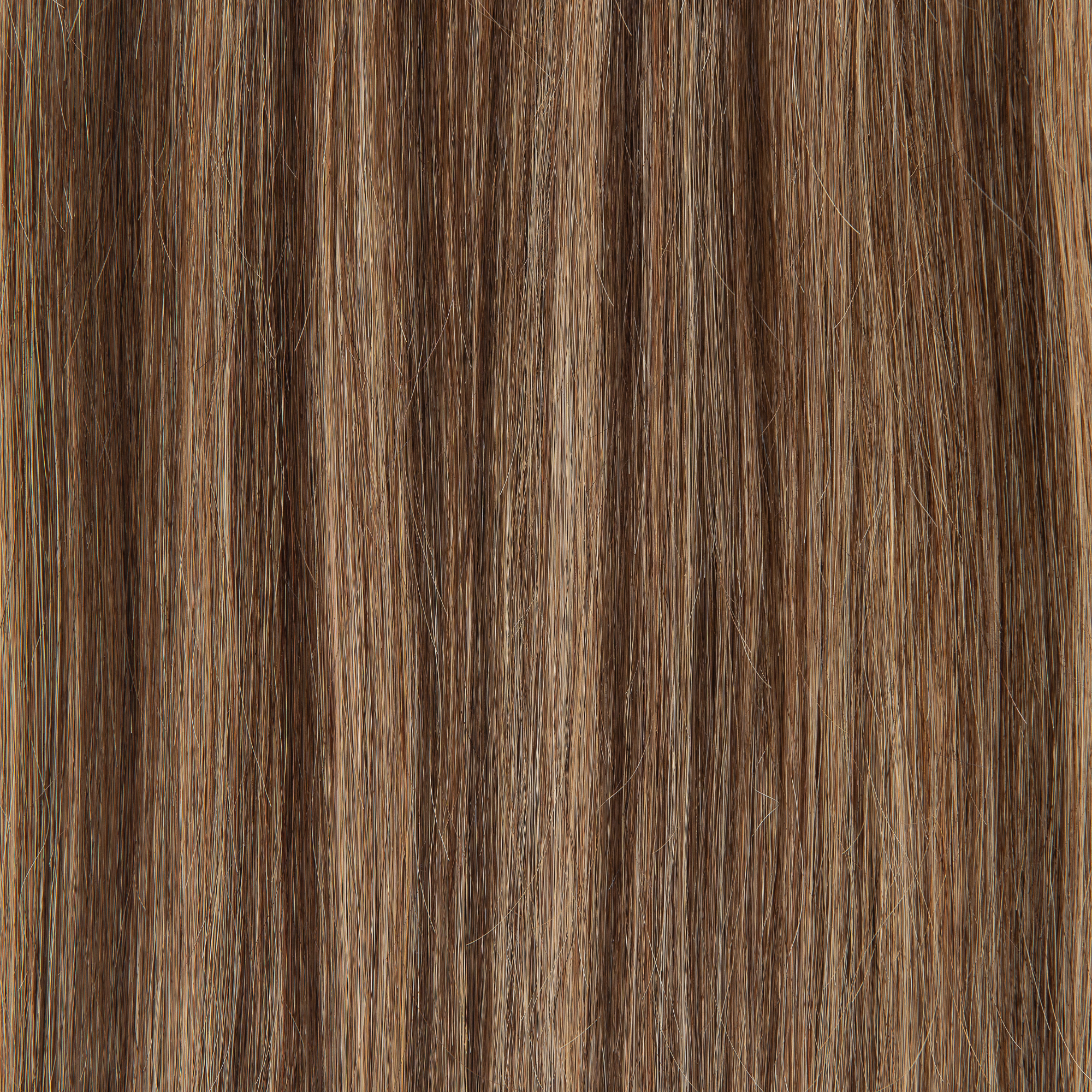
How to Cut Hair Extensions
- Irene GilmanEver found yourself in a bit of a pickle, staring in the mirror at hair extensions that just don't seem to get along with your natural hair?
Maybe they're hanging a bit too long, and you're itching to give them a custom snip. Fear not! You've landed in the right spot to turn those extensions from "almost there" to "absolutely perfect."
This is your go-to guide for everything you need to know about how to cut hair extensions at home, making them blend so seamlessly, you'll forget where your hair ends and the extensions begin. We'll walk you through the perks of trimming your extensions, the best snip-snap techniques focusing on scissors, prepping your extensions like a pro, and a foolproof step-by-step on how to trim those beauties at home. Plus, we'll let you in on the common mistakes to avoid.
Why Trimming Your Hair Extensions Is a Game-Changer
Let's talk about how to cut extensions in layers to perfection. This little tweak can add volume, introduce some chic layers, or let you play around with styles in ways your natural hair might not allow. Don't just take our word for it; check out our before and after pictures to see how trimming extensions made them look more seamless and in tune with the natural hair's flow.
It's a small step that makes a big difference, giving your extensions that tailor-fitted look to blend beautifully with your hair.
The Preferred Tool: Scissors over Feather Razors

While there's a place for both scissors and feather razors, scissors take the cake for us. We know how tempting those videos on how to cut your own hair extensions are, showing people effortlessly snipping away with feather razors, making it look like a breeze. But when it comes to precision and control, especially if you're just dipping your toes into the world of extension customization, scissors are your go-to. They offer that unmatched precision and control, making them your best bet for clean, damage-free cuts. So, let's leave the feather razors to the pros and stick with scissors for a look that's both chic and seamless.
Getting Your Extensions Ready
Before we get into trimming, make sure both your hair and the extensions are squeaky clean. It's crucial for both to be dry and smooth. This step is more than just a prep; it's about ensuring you learn how to cut your hair extensions yourself seamlessly. We recommend blow drying the extensions along with your hair to get them as smooth as possible. This helps you see what you're really working with, giving you a crystal-clear view of the true length and lay of the extensions. A little effort here sets the stage for those perfect, seamless blends that we're aiming for
The DIY Guide on How To Cut Extensions
How do you cut extensions? Follow these simple steps to achieve that salon-fresh look right at home:
Step 1: Secure Those Extensions
Start by applying your extensions to your own head, blending them in with your natural hair. It's important to take note of which piece you're placing where. This initial step isn't just about seeing how they'll look once cut and styled; it's about ensuring consistency. Since we'll be trimming the extensions, it's crucial to reapply them in the same spot every time you wear them again to maintain that seamless blend. This way, you get to see the real-time effect of how each piece contributes to the overall look, ensuring you get that just-right length and volume where you need it most.
Step 2: No Tangles Allowed
Before you make the first snip, it's crucial to ensure both your hair and the extensions are completely brushed out and free of tangles. You definitely don't want to snag a knot while you're in the middle of cutting. A smooth, tangle-free base is key to achieving that precision cut, especially if you're aiming for layers or a specific look. Taking the time to thoroughly comb through your extensions and your natural hair sets you up for success, making the cutting process smoother and ensuring the final look is exactly as you envisioned.
Step 3: Precise Hair Extension Trimming
When it comes to trimming, remember the golden rule: start little by little. You can always decide to trim more, but once it's cut, there's no going back. Begin by bringing all your hair to the front. Trimming the ends can start with a blunt cut to get rid of the excess length. Then, to achieve that sought-after feathered effect, go in with your scissors and point cut into the ends.
Next, let's tackle face framing. This might sound a bit daunting, but it's simpler than you think. Take the longest piece of hair at the front as your guide and start trimming just below it at an angle. Yes, it may feel a bit scary, but with a light hand, use the back of the scissor and gently slide it down as you cut. This technique helps create a soft, natural look that frames the face beautifully. Then, repeat the same process on the other side to ensure symmetry.
Now, it's time to add some movement throughout the rest of your hair. Again, starting from the longest piece, begin cutting layers into the extensions at an angle. This step is about enhancing the natural flow and volume of your hair, giving it that lively, dynamic look. Work your way around the head, repeating this process, to ensure an even and cohesive style that moves beautifully with you.
Steering Clear of Common Mistakes

When you trim extensions at home, a few missteps can easily turn your DIY session into a regretful experience. First and foremost, cut a little at a time. When learning how to cut extensions shorter It's tempting to chop off more to quickly achieve your desired look, but patience is key. Remember, you can always cut more, but you can't reverse a cut that's too short.
Another common mistake is cutting the hair extensions while they're wet. While this might seem like a good idea for achieving a more even cut, it can actually distort how the extensions will lay when they dry, leading to uneven lengths.
Lastly, when learning how to cut hair extensions to blend, avoid cutting with hair extensions that are not clean or have styling products like hairspray on them. Product buildup can affect the scissors' glide through the hair, resulting in uneven cuts and potentially damaging both your extensions and scissors. Always work with clean, product-free hair to ensure the smoothest cut and best results
Bringing It All Together
Trimming your hair extensions at home can be a straightforward and rewarding experience, giving you that salon-fresh look without stepping out of your door. With clean, detangled hair and extensions, careful sectioning, and a step-by-step approach, you'll achieve natural hair extensions that seamlessly blend in no time. Remember, the key is to go slow, cut in small increments, and always work with dry, product-free hair for the most accurate results.
Tackling common how do you cut hair extensions mistakes head-on—like cutting too much off at once or working with wet extensions—will keep your from learning how to trim hair extensions into a DIY dilemma. It's all about enhancing your look with precision and care.
F.A.Q's
When cutting extensions, it's crucial to approach it carefully to avoid damaging them. First, section the hair, ensuring it's tangle-free. Start by trimming small sections with sharp scissors, following the natural flow of the hair. This method helps maintain a clean and precise cut. Always check the balance on both sides as you go along.
Cutting your own hair extensions at home can be challenging, but it's doable with patience. Begin by brushing through the extensions and securing them on your head as you would wear them. Use a pair of sharp shears and trim little by little, constantly checking in the mirror to ensure evenness. It's best to cut dry, styled hair, so you can see exactly how the extensions will fall.
To cut curly hair extensions, it's important to work on dry hair to maintain the curl pattern. Curly hair naturally shrinks when dry, so cutting it while wet can lead to shorter-than-expected results. Use sharp scissors to trim only the ends, and cut in small sections to keep the curls intact.
Blending extensions with natural hair requires careful cutting. The key is to mimic the natural layers and texture of your own hair. Start by cutting the extensions in small sections, always holding them at an angle to create a gradual transition from your natural hair to the extensions. Thinning shears can also help blend the extensions without creating harsh lines.
Cutting extensions in layers can add volume and movement. First, determine where you want the layers to begin. Starting from the bottom, gradually cut upwards in a layered fashion, taking care to keep the layers soft and natural. This method enhances the overall texture and gives the extensions a fuller appearance.









